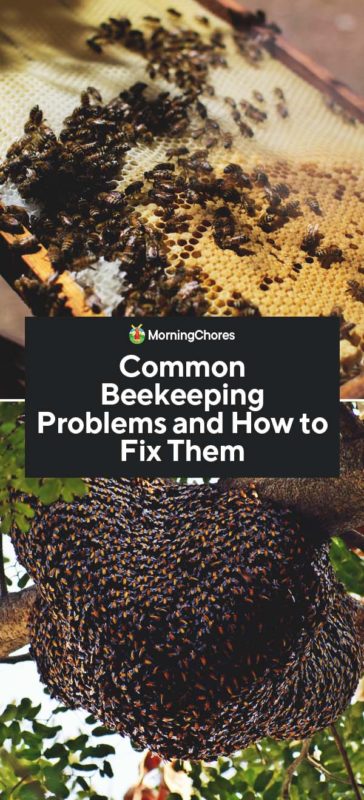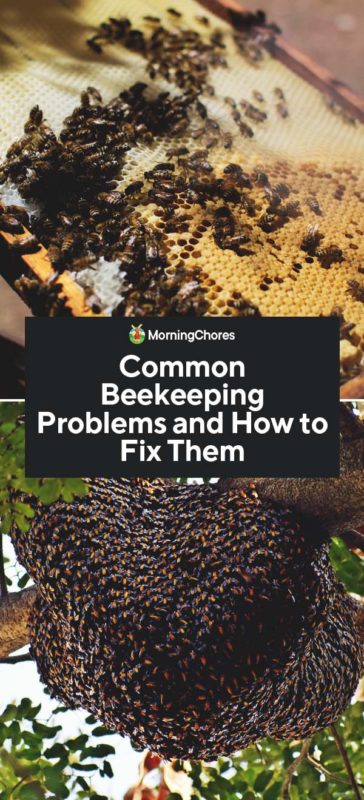
Are you a beekeeper looking for effective methods to manage pests and diseases in your beehive? In this article, we will explore the best strategies and techniques to keep your bees healthy and thriving. Whether it’s dealing with mites, parasites, or fungal infections, we’ve got you covered. Discover the tools and practices that will help you maintain a strong and vibrant colony, ensuring the well-being of your bees and the success of your beekeeping venture.
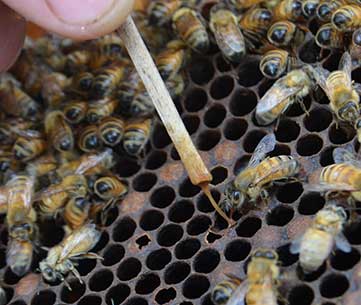
Identifying and Monitoring
Regular hive inspections
Regular hive inspections are crucial for identifying and monitoring pests and diseases in your beehive. By conducting inspections at consistent intervals, you can catch any issues early on and take appropriate action. During these inspections, it’s essential to carefully observe the behavior and overall condition of your honeybees. Look for signs of stress, abnormal activities, or unusual appearances. Regular inspections also give you the opportunity to evaluate the health and strength of your colony.
Recognizing common pests
Being able to identify common pests is key to managing them effectively. Some common pests that can infest beehives include varroa mites, small hive beetles, and wax moths. Varroa mites are one of the most serious threats to honeybees as they weaken the colony and spread diseases. Small hive beetles can cause significant damage to honeycombs, while wax moths consume wax and other hive materials. By familiarizing yourself with the appearance and behavior of these pests, you can quickly identify their presence in your beehive.
Identifying common diseases
Along with pests, honeybees are susceptible to various diseases. American foulbrood and nosema are two prevalent diseases that can impact your hive. American foulbrood is a bacterial infection that can be highly contagious and deadly to honeybees. Nosema, on the other hand, is caused by a fungal parasite and can weaken the colony if left untreated. Learning to identify the symptoms and signs of these diseases is crucial for early detection and effective management.
Preventive Measures
Maintaining a strong and healthy colony
Keeping your honeybee colony strong and healthy is one of the best preventive measures against pests and diseases. This involves providing your bees with proper nutrition, ensuring they have access to clean water and a variety of pollen and nectar sources. Regularly monitoring their overall well-being and addressing any issues promptly is essential to maintaining a strong and resilient colony.
Providing adequate nutrition
Adequate nutrition is vital for the health of your honeybees. Ensure that they have access to a diverse range of flowering plants that provide pollen and nectar throughout the year. Supplement their diet with sugar syrup or pollen patties when natural forage is limited. By providing a balanced and nutritious diet, you can strengthen their immune systems and increase their ability to resist pests and diseases.
Proper beekeeping equipment and hive design
using the right beekeeping equipment and hive design can greatly contribute to pest and disease management. Ensure that your beehive is well-designed with proper ventilation, insulation, and spacing between frames. The use of high-quality hive materials and equipment not only ensures the comfort and well-being of your bees but also reduces the risk of pest infestations.
Site selection and hive placement
Choosing the right location for your beehive is crucial in preventing and managing pests and diseases. Select a site that provides adequate sunlight, shelter from strong winds, and is free from standing water. Additionally, consider the surrounding vegetation and avoid areas with excessive pesticide usage, as this can harm your bees and increase their vulnerability to pests and diseases.
Maintaining cleanliness in and around the beehive
Keeping your beehive and the surrounding area clean is essential for preventing and managing pests and diseases. Regularly remove debris and dead bees from the hive, as these can attract pests and spread diseases. Practice good hygiene by regularly cleaning and sterilizing your beekeeping equipment. Additionally, manage weeds and overgrown vegetation around the beehive, as they can provide hiding places for pests and disruptive airflow.
Integrated Pest Management
Reducing pest habitat
To effectively manage pests, it’s important to reduce their habitat and limit their access to your beehive. Remove any unnecessary equipment, comb, or debris from the hive as these can provide hiding places for pests. Minimize cracks and crevices in the hive to prevent pests from gaining entry. Regularly inspect the hive for signs of pest activity and take appropriate action immediately.
Using physical barriers
Physical barriers can be used to deter pests from entering the hive. For example, small grid screens can be installed at the hive entrance to prevent small hive beetles from gaining access. Similarly, sticky traps can be placed in strategic locations within the hive to catch and trap pests such as wax moths. By using physical barriers, you can create an additional layer of protection for your honeybees.
Creating natural deterrents
Natural deterrents can also play a role in managing pests in your beehive. Certain plants, such as marigolds, mint, and lavender, have strong scents that repel pests like varroa mites and small hive beetles. Planting these flowers near your beehive can help deter pests and reduce the risk of infestation.
Implementing biological controls
biological controls involve using other organisms to control pest populations. For example, introducing certain species of predatory mites can help control varroa mite infestations. Similarly, certain beetle-destroying nematodes can be used to combat small hive beetles. Utilizing beneficial organisms can be a natural and environmentally-friendly approach to managing pests in your beehive.
Utilizing organic pest control methods
Organic pest control methods focus on using natural, non-toxic substances to manage pests. These can include using essential oils, such as tea tree or thyme oil, which have been found to have repellent properties against various pests. Another method is the use of powdered sugar dusting, which can help dislodge and remove mites from honeybees. Organic pest control methods offer a safer alternative to chemical treatments while still effectively managing pests.
Chemical Treatments
Understanding the use of pesticides
Chemical treatments should be used as a last resort and with caution. It’s important to understand the potential risks and impact of pesticides on your honeybees and the environment. Ensure that you are knowledgeable about the specific pesticides you plan to use and carefully read and follow all label instructions.
Choosing the right pesticides
When choosing pesticides for your beehive, opt for those specifically labeled for use in beekeeping. These products are formulated to minimize harm to bees while effectively targeting the intended pests. Select pesticides that have the least amount of residual effects and choose those with a short degradation time.
Applying pesticides safely
When applying pesticides, it’s crucial to follow all safety guidelines to protect yourself and your honeybees. Wear appropriate protective clothing, such as gloves, goggles, and a beekeeper’s veil, to avoid direct contact with the chemicals. Apply pesticides during low activity periods to minimize the risk of contact with foraging bees. Make sure to use the recommended dosage and avoid any drift onto surrounding vegetation or water sources.
Follow-up monitoring and evaluation
After applying chemical treatments, it’s important to monitor the effectiveness of the treatment and the impact on your honeybees. Regularly inspect the hive for any signs of continued pest activity and monitor the health and behavior of your bees. Evaluate the success and safety of the treatment, and if necessary, seek advice from experienced beekeepers or local authorities to make any necessary adjustments.
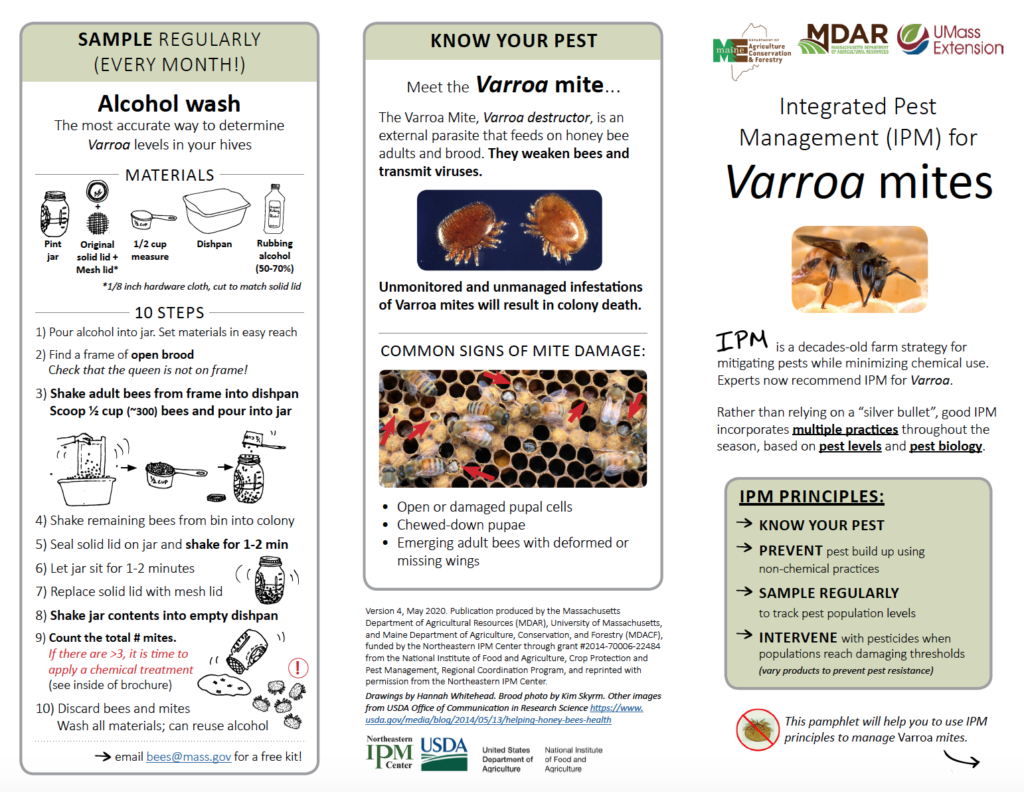
Varroa Mite Management
Understanding the threat of varroa mites
Varroa mites are one of the most significant threats to honeybees worldwide. They are external parasites that feed on the bodily fluids of honeybees, weakening them and acting as vectors for various diseases. varroa mites can cause significant damage to entire colonies if left untreated.
Monitoring varroa mite infestation levels
Regular monitoring of varroa mite infestation levels is essential for early detection and effective management. One common method is performing a “sugar roll” test, where a sample of bees is collected and shaken in a jar with powdered sugar. The sugar dislodges the mites, allowing you to count and assess the infestation level. Monitoring should be done regularly throughout the season to track the population dynamics of varroa mites.
Implementing varroa mite control strategies
Various strategies can be implemented to manage varroa mite infestations. Integrated Pest Management (IPM) techniques, such as drone brood trapping or screened bottom boards, can help reduce the mite population. Additionally, using natural treatments, such as formic acid or thymol, can be effective in controlling mites. It is important to rotate treatments to prevent mite resistance and to follow the manufacturer’s instructions for proper application.
Chemical treatments for varroa mite control
In severe infestations, chemical treatments may need to be considered. However, caution should be exercised, as the use of certain chemicals can be harmful to bees and the environment. When using chemical treatments for varroa mite control, it is crucial to choose products labeled for use in beehives and follow all safety instructions. Regular monitoring following treatment is essential to assess its effectiveness and any potential side effects on the honeybees.
Small Hive Beetle Management
Understanding the threat of small hive beetles
Small hive beetles are another common pest that can cause significant damage to beehives. These dark-colored beetles lay their eggs in the hive, where the larvae feed on honey, pollen, and brood. Infestations can weaken the hive, affect its honey production, and even lead to the abandonment of the hive.
Monitoring small hive beetle infestation levels
Regular monitoring of small hive beetle infestation levels is essential to detect and manage their presence. Visual inspections can be conducted, focusing on the inner surfaces of the hive, where beetles and their larvae are commonly found. Additionally, monitoring traps specifically designed for small hive beetles can be utilized to catch and assess their population.
Implementing small hive beetle control strategies
To manage small hive beetles, it is important to implement various control strategies. Maintaining a strong and healthy colony helps bees defend against beetles. Employing proper ventilation and spacing in the hive reduces beetle hiding places. Placing beetle traps with beetle-attracting lures within the hive can also help capture and control beetle populations. Prompt removal of any hive debris or excess honey, which can attract beetles, is crucial for managing their infestations.
Chemical treatments for small hive beetle control
In severe infestations, chemical treatments may be necessary to control small hive beetles. However, caution must be exercised to ensure the safety of the bees and the environment. Specific pesticides labeled for small hive beetle control should be selected, and their application should be done in accordance with the manufacturer’s instructions. Thorough monitoring after treatment is essential to assess its effectiveness and any potential impacts on the honeybee colony.
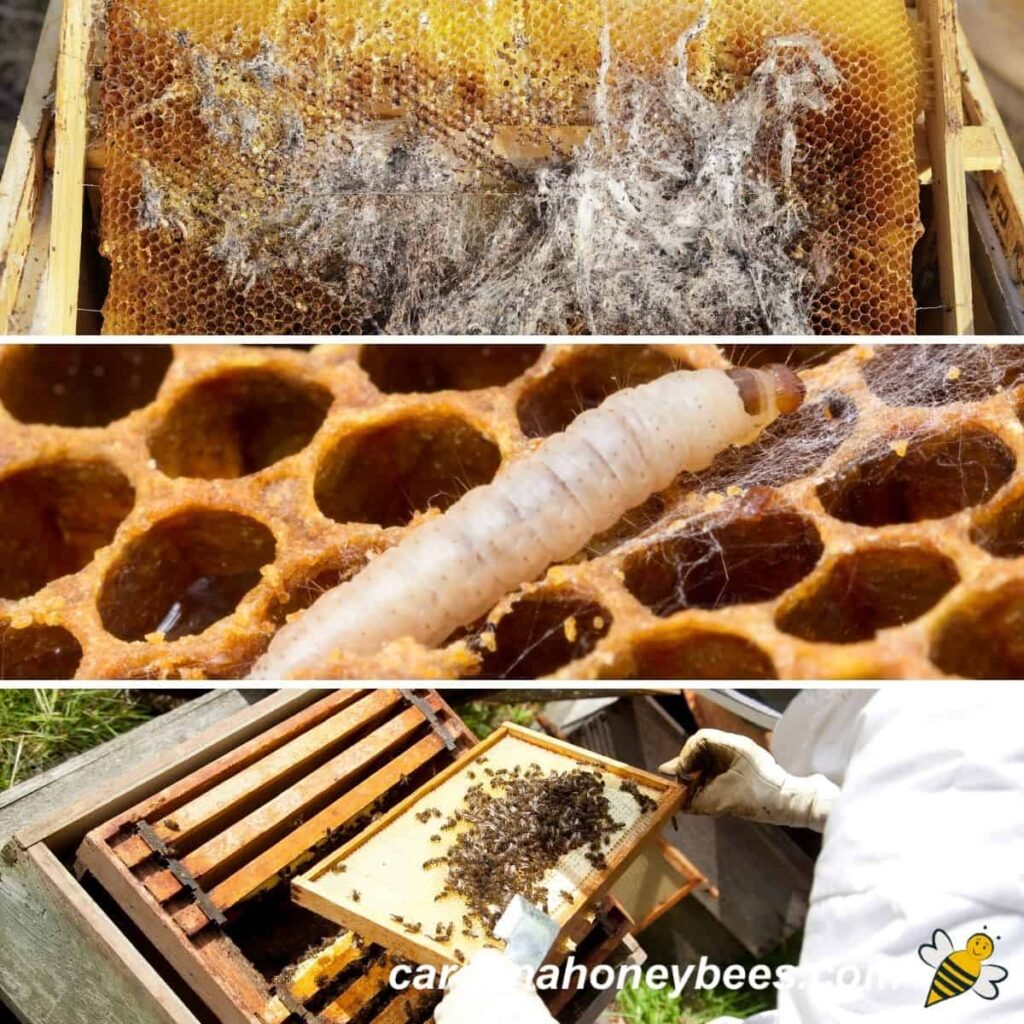
Wax Moth Management
Understanding the threat of wax moths
Wax moths are common pests that infest beehives, particularly weak or neglected colonies. The larvae of wax moths feed on beeswax, pollen, and other materials within the hive, leading to the destruction of comb and honey stores. Although they are primarily attracted to weak colonies, strong colonies can also be affected if infestation levels are high.
Monitoring wax moth infestation levels
Regular monitoring of wax moth infestations is crucial to prevent extensive damage to beehives. Inspect the hive for signs of wax moth larvae, such as webbing or silken tunnels on the frames and combs. If an infestation is detected, immediate action should be taken to minimize the spread and impact of the larvae.
Implementing wax moth control strategies
To manage wax moth infestations, various control strategies can be implemented. Maintaining a strong and healthy colony is crucial, as wax moths are less likely to target a strong hive. Promote good ventilation within the hive to deter wax moths, and continuously remove any weakened or damaged comb to limit wax moth egg-laying opportunities. Freezing or heating the affected frames can also kill wax moth larvae and eggs.
Chemical treatments for wax moth control
If wax moth infestations are severe or persistent, chemical treatments may be considered. However, it is important to choose pesticides specifically labeled for wax moth control and follow all safety instructions. Apply the chemicals directly to the affected areas, ensuring proper ventilation and safety precautions. Regular monitoring should continue following treatment to assess its effectiveness and any potential effects on the honeybees.
American Foulbrood Management
Understanding the threat of American foulbrood
American foulbrood is a highly contagious and destructive bacterial disease that affects honeybee larvae. It can cause the death of entire brood colonies if left untreated. Infected hives should be managed carefully to prevent the disease from spreading to other colonies nearby.
Recognizing signs of American foulbrood
Early recognition of American foulbrood is crucial to prevent its spread and damage. Signs of this disease include irregularly-shaped, sunken, or perforated cappings, “ropey” or brownish larvae, and the foul smell of decaying brood. A thorough inspection of the hive and recognition of these symptoms can help you identify and manage the disease promptly.
Implementing control measures for American foulbrood
Managing American foulbrood requires strict control measures to prevent its spread. Infected hives should be isolated and immediately reported to local beekeeping authorities. The complete removal and destruction of infected frames and combs are usually necessary. Sterilization of equipment, such as tools and hive components used in infected hives, is crucial to prevent reinfection. Consult with local beekeeping authorities for detailed protocols on managing American foulbrood.
Contacting local beekeeping authorities
When faced with a suspected or confirmed case of American foulbrood, it is essential to contact local beekeeping authorities promptly. They can provide guidance on appropriate management protocols and may assist in the inspection and confirmation of the disease. Local beekeeping associations or government agencies dedicated to beekeeping are valuable resources in managing American foulbrood.

Nosema Management
Understanding the threat of nosema
Nosema is a fungal infection that affects the digestive system of honeybees. It can weaken colonies and impact their overall health and productivity. Nosema infections are more common during periods of stress, such as winter or when nectar sources are scarce.
Identifying symptoms of nosema infection
Recognizing the symptoms of nosema infection is crucial for its management. Common signs include bees with distended abdomens, increased defecation in and around the hive, and reduced activity. Conducting thorough inspections and closely observing the behavior and appearance of your bees can help detect and address nosema infections.
Implementing control measures for nosema
To manage nosema infections, several control measures can be implemented. Providing a clean and hygienic environment for your bees is essential. Regularly clean and sterilize your hive equipment to minimize the risk of infection. Promote good ventilation within the hive and ensure proper nutrition to help boost bees’ immune systems. In severe cases, treatments such as medicated feed or fumagillin (an antibiotic) may be necessary. Consult experienced beekeepers or local authorities for advice and guidance on managing nosema.
Maintaining good hygiene practices
Maintaining good hygiene practices in and around your beehive is crucial for preventing and managing nosema and other diseases. Regularly remove and clean any debris, dead bees, or excess honey from the hive. Ensure that the hive is properly ventilated to reduce moisture build-up, which can increase the risk of nosema infections. Additionally, practice good hygiene when handling beekeeping equipment and avoid cross-contamination between hives.
Collaboration and Knowledge Sharing
Joining local beekeeping associations
Joining local beekeeping associations is a wonderful way to collaborate and share knowledge with fellow beekeepers. These associations often offer workshops, training programs, and resources to help beekeepers learn about pest and disease management techniques. Engaging with other beekeepers allows you to learn from their experiences, gain valuable insights, and build a supportive community.
Participating in workshops and conferences
Participating in workshops and conferences focused on beekeeping and pest/disease management is another beneficial way to expand your knowledge. These events often feature expert speakers, hands-on training, and discussions on the latest research and best practices. Attending these gatherings provides opportunities to network with professionals and engage in valuable knowledge sharing.
Engaging with experienced beekeepers
Engaging with experienced beekeepers is invaluable when it comes to pest and disease management. Experienced beekeepers have first-hand knowledge and insights gained through years of working with bees. Seek out mentorship opportunities or establish relationships with experienced beekeepers who can offer guidance, advice, and support along your beekeeping journey.
Sharing knowledge within the beekeeping community
Sharing knowledge within the beekeeping community is crucial for collective learning and improvement. Write articles, start a blog, or participate in online forums to share your experiences and insights with other beekeepers. By contributing to the collective knowledge, you can help fellow beekeepers navigate the challenges of managing pests and diseases in their beehives.
In conclusion, effectively managing pests and diseases in your beehive requires a comprehensive approach that encompasses regular inspections, preventive measures, integrated pest management techniques, and appropriate treatments when necessary. By staying vigilant and proactive, maintaining strong and healthy colonies, and actively engaging with the beekeeping community, you can ensure the well-being and productivity of your honeybees. Remember, honeybees play a vital role in our ecosystems, and your efforts in managing their pests and diseases contribute to their survival and the preservation of these precious pollinators.
